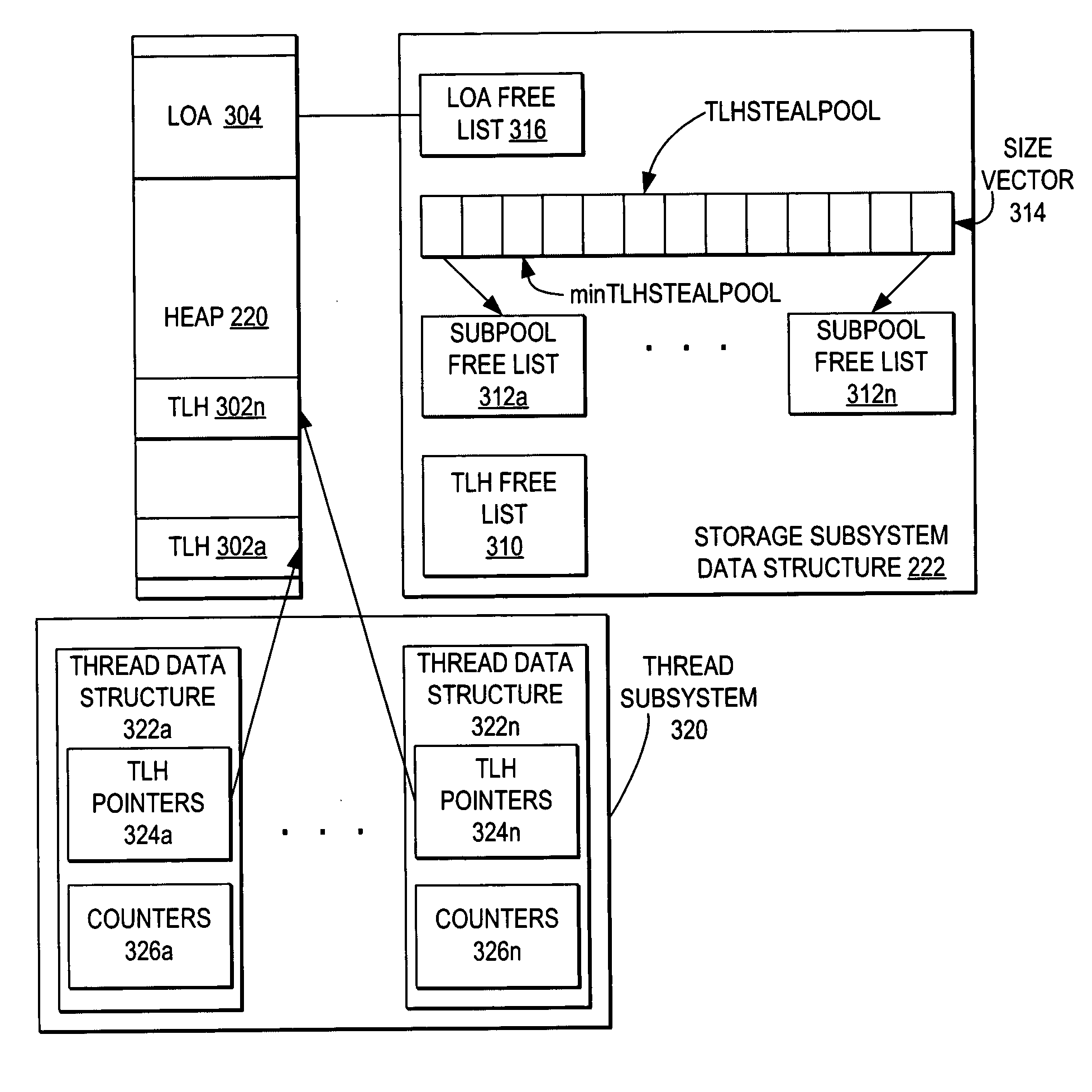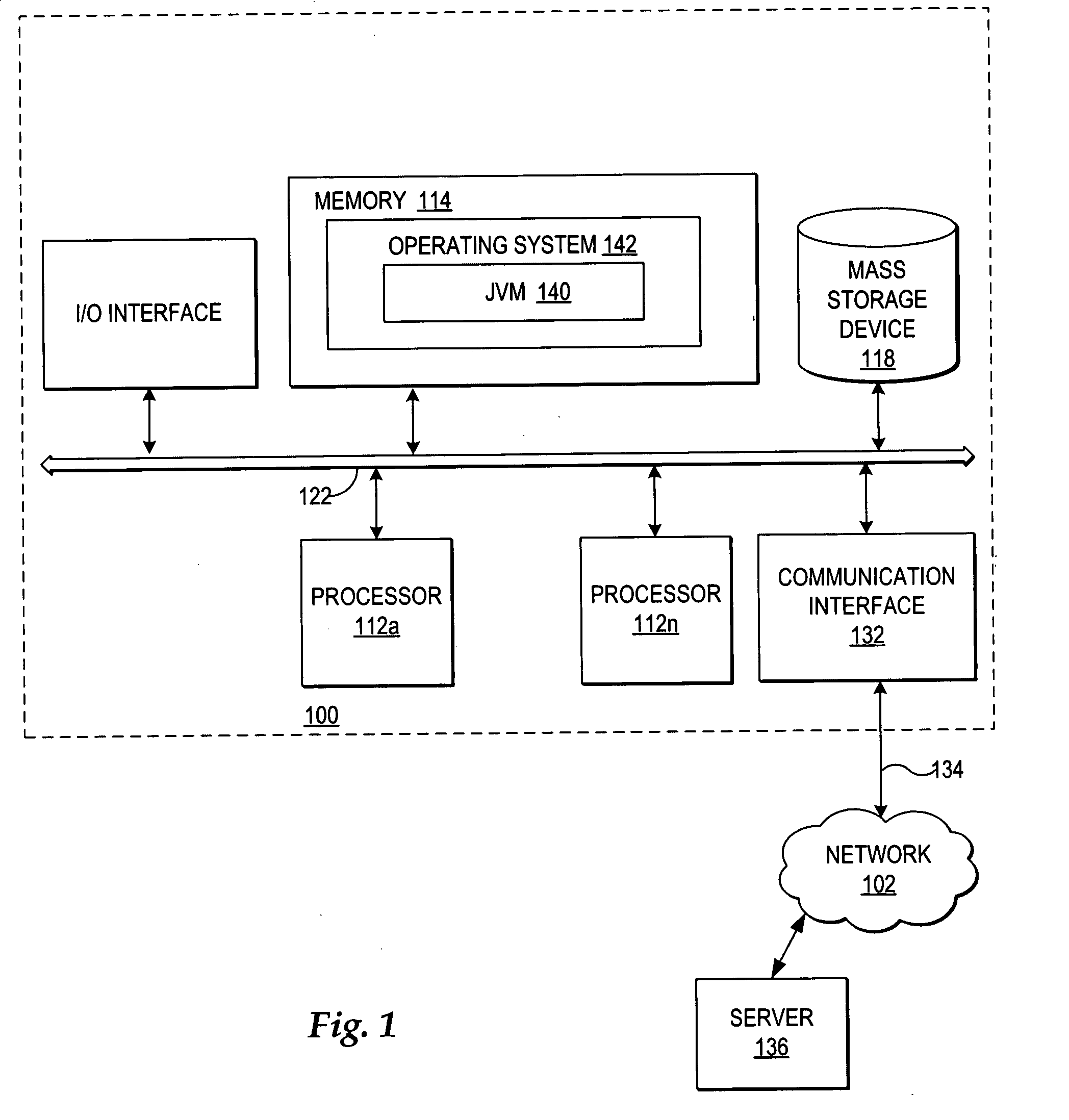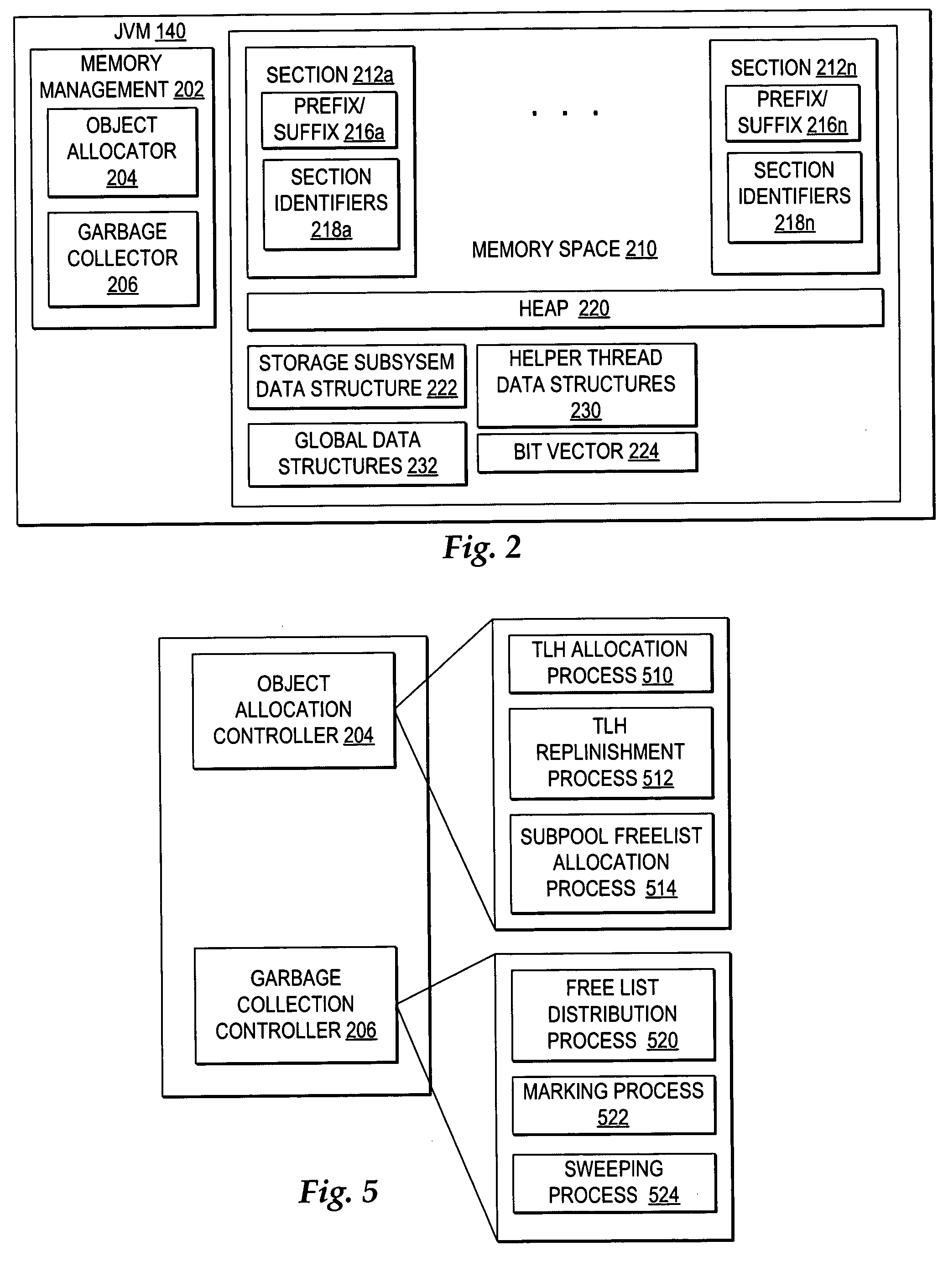Free item distribution among multiple free lists during garbage collection for more efficient object allocation
a free item and object allocation technology, applied in the field of heap management, can solve the problems of premature garbage collection, affecting the efficiency of garbage collection, so as to improve the efficiency of heap management, improve the free item distribution, and improve the effect of heap managemen
- Summary
- Abstract
- Description
- Claims
- Application Information
AI Technical Summary
Benefits of technology
Problems solved by technology
Method used
Image
Examples
Embodiment Construction
[0036] Referring now to the drawings and in particular to FIG. 1, there is depicted one embodiment of the hardware and software implemented in a computer system through which the present method, system, and program may be implemented. The present invention may be executed in a variety of systems, including a variety of computing systems and electronic devices.
[0037] Computer system 100 generally includes a bus 122 or other communication device for communicating information within computer system 100, and at least one processing device, such as processor 112a, coupled to bus 122 for processing information. Bus 122 preferably includes low-latency and higher latency paths that are connected by bridges and adapters and controlled within computer system 100 by multiple bus controllers. When implemented as a server system, computer system 100 typically includes multiple processors, such as processors 112a-112n that operate in parallel to improve network servicing power.
[0038] Processors...
PUM
 Login to View More
Login to View More Abstract
Description
Claims
Application Information
 Login to View More
Login to View More - R&D
- Intellectual Property
- Life Sciences
- Materials
- Tech Scout
- Unparalleled Data Quality
- Higher Quality Content
- 60% Fewer Hallucinations
Browse by: Latest US Patents, China's latest patents, Technical Efficacy Thesaurus, Application Domain, Technology Topic, Popular Technical Reports.
© 2025 PatSnap. All rights reserved.Legal|Privacy policy|Modern Slavery Act Transparency Statement|Sitemap|About US| Contact US: help@patsnap.com



